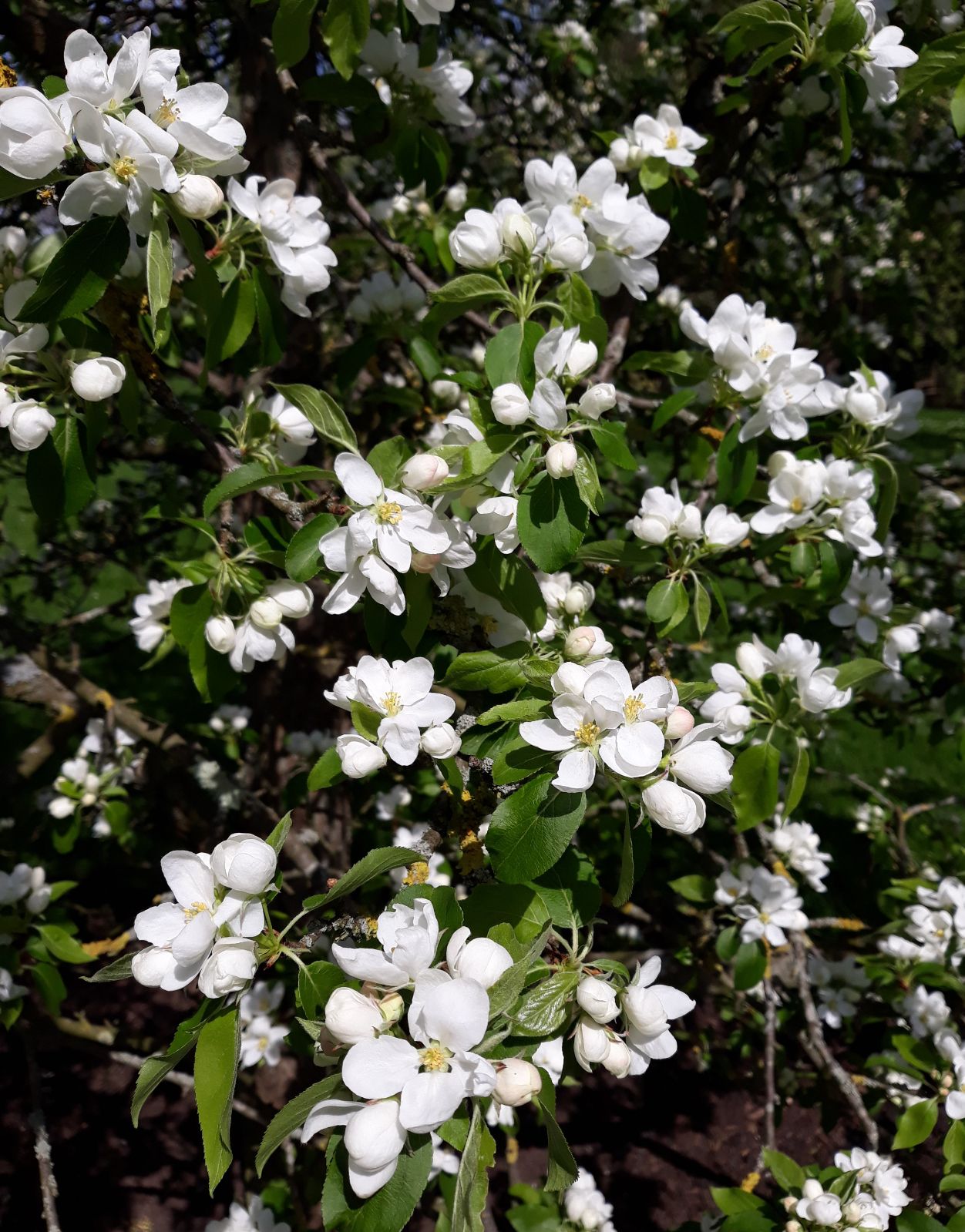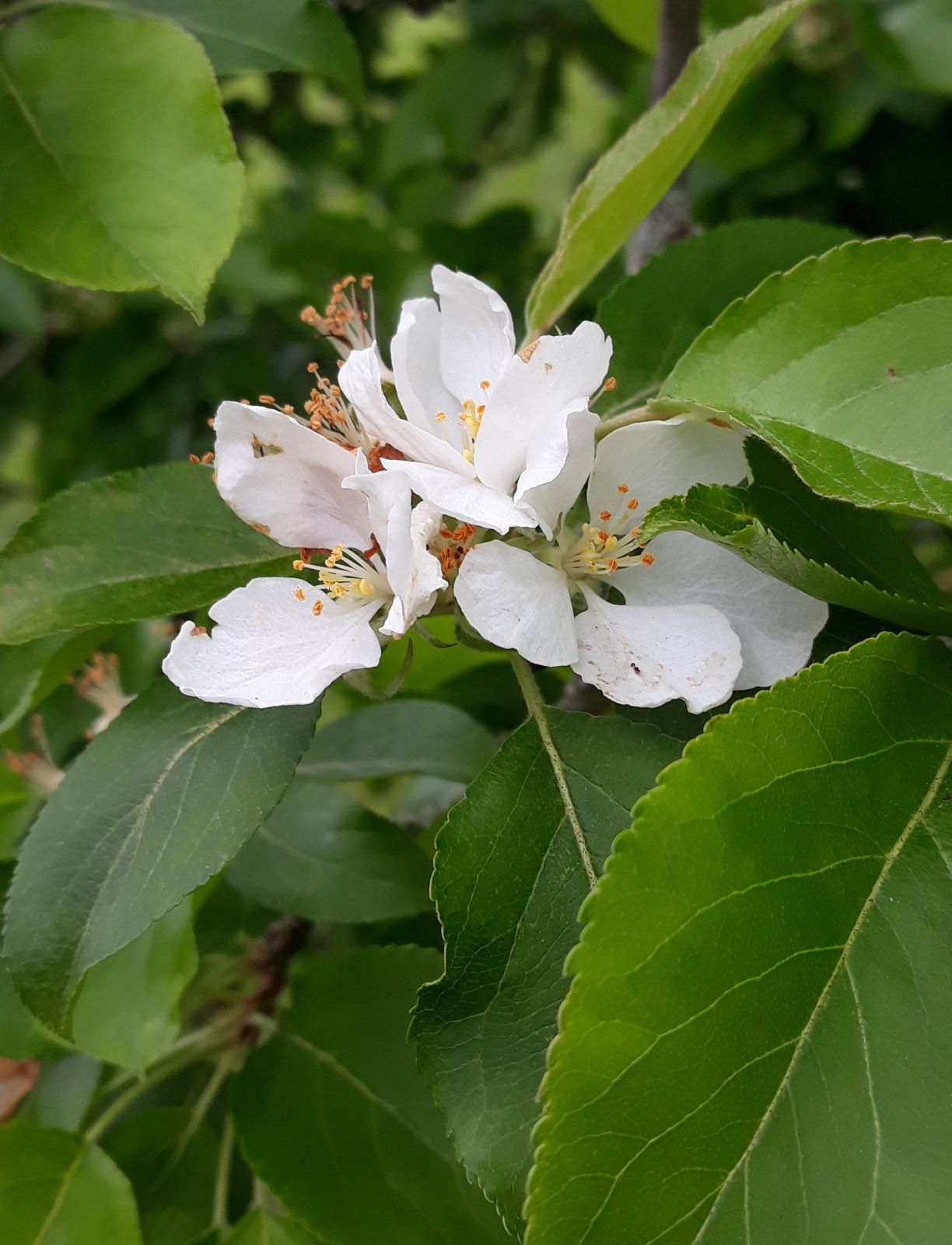Malus prunifolia
Sponsor
Kindly sponsored by
Francine: 'after many informative Tours and Study Days with the IDS I feel it only fitting to help and promote such a wonderful organisation'
Credits
Julian Sutton (species), Nick Dunn (cultivars) (2021)
Recommended citation
Sutton, J. & Dunn, N. (2021), 'Malus prunifolia' from the website Trees and Shrubs Online (treesandshrubsonline.
Other taxa in genus
- Malus × adstringens
- Malus angustifolia
- Malus × arnoldiana
- Malus asiatica
- Malus × astracanica
- Malus × atrosanguinea
- Malus baccata
- Malus bhutanica
- Malus × brevipes
- Malus chitralensis
- Malus coronaria
- Malus crescimannoi
- Malus Cultivars A-B
- Malus Cultivars C
- Malus Cultivars D-F
- Malus Cultivars G-I
- Malus Cultivars J-K
- Malus Cultivars L-M
- Malus Cultivars N-Q
- Malus Cultivars R
- Malus Cultivars S
- Malus Cultivars T-Z
- Malus dasyphylla
- Malus × dawsoniana
- Malus domestica
- Malus doumeri
- Malus florentina
- Malus × floribunda
- Malus fusca
- Malus × gloriosa
- Malus halliana
- Malus × hartwigii
- Malus × heterophylla
- Malus honanensis
- Malus hupehensis
- Malus ioensis
- Malus kansuensis
- Malus kirghisorum
- Malus komarovii
- Malus × magdeburgensis
- Malus × micromalus
- Malus × moerlandsii
- Malus montana
- Malus ombrophila
- Malus orientalis
- Malus × platycarpa
- Malus praecox
- Malus prattii
- Malus × purpurea
- Malus × robusta
- Malus rockii
- Malus Rootstock Cultivars
- Malus Rosybloom Cultivars
- Malus × scheideckeri
- Malus sieversii
- Malus sikkimensis
- Malus × soulardii
- Malus spectabilis
- Malus spontanea
- Malus × sublobata
- Malus sylvestris
- Malus toringo
- Malus transitoria
- Malus trilobata
- Malus tschonoskii
- Malus turkmenorum
- Malus yunnanensis
- Malus × zumi
Small tree to 10 m. Branchlets greyish, robust, with dense, fine hairs when young. Buds purplish brown, ovoid, sparsely pubescent. Leaf blade ovate to elliptic, 5–9 × 4–5 cm, sparsely hairy on veins beneath when young, base cuneate, apex acute to acuminate, margin with small teeth; petiole 1–5 cm, with dense, fine hairs at first. Inflorescence a 4–10-flowered corymb, 4–8 cm across; pedicels 2–3.5 cm, finely hairy. Flowers 4–5 cm diameter, April-May in China. Sepals lanceolate, 7–9 mm, with fine hairs on both surfaces, persistent; petals 2.5–3 cm, white, sometimes pink in bud; stamens 20, unequal; styles 4, exceeding stamens. Fruit yellowish or red, ovoid, 2.5–3 cm diameter, August-September in China. (Gu et al. 2003; Cullen et al. 2011; Bean 1981).
Distribution China Gansu, Guizhou, Hebei, Henan, Liaoning, Nei Mongol, Qinghai, Shaanxi, Shandong, Shanxi, Xinjiang(?)
Habitat Slopes, plains; 0–1300 m asl.
USDA Hardiness Zone 4-8
RHS Hardiness Rating H6
Conservation status Data deficient (DD)
Grown both for its rather small, sweet fruit and as a rootstock in central and northern China (Gu et al. 2003), Malus prunifolia has a long but rather undistinguished history as an ornamental in western gardens. Any attraction must lie in the heavy crop of red or yellow fruit, which tends to be produced in alternate years, but this is a disease-prone species (Fiala 1994).
Molecular evidence (Duan et al. 2017) supports earlier suspicions that both M. prunifolia and M. asiatica resulted from hybridization when M. sieversii, carried east from Central Asia on the Silk Road, met native M. baccata in northern China. Both now behave as distinct, recognizable species, just as does M. domestica in Eurasia, which was apparently the result of M. sieversii being carried west and encountering native M. sylvestris (Duan et al. 2017). M. prunifolia differs from M. asiatica in its larger flowers with longer, less hairy sepals and white rather than pinkish petals; smaller fruit; longer pedicels with less dense hairs; and much less hairy undersides to the leaves (Gu et al. 2003).
Malus prunifolia was grown in European gardens before it had been described scientifically, supposedly introduced from Siberia in the 1750s (Bean 1981; Elwes & Henry 1912). It is not known as a wild plant in Russia, but has been cultivated there as an ornamental (Yuzepchuk 1971). It was named in 1794 (as a Pyrus) by the German pharmacist, taxonomist and pioneer of plant biogeography Karl Willdenow. His specific epithet (from the Latin prunus, a plum tree) speaks for itself.
This seems never to have been a common tree in Europe. Elwes & Henry (1912) knew of it at Kew and mention a ‘fine specimen’ of over 10 m at Bayfordbury, now a University of Hertfordshire campus. The Tree Register (2020) records some larger trees in cemeteries around London, several in Gunnersbury Cemetery (the largest 8 m × 145 cm, 2012) and one in Croydon Cemetery (9 m × 134 cm, 2013); another in Bute Park, Cardiff was measured at 9 m × 116 cm in 2004. At RBG Edinburgh and Benmore Botanic Garden, Argyll, there are young trees labelled M. prunifolia grown from seed collected in 2013 in Yunnan (M.A. Dixon 20 – Royal Botanic Garden Edinburgh 2020a), where it has a ‘semicultivated’ status, used for fruit and as a rootstock (Zhang, Zhang & Hu 1993).
M. prunifolia is recorded in Belgium at the Arboretum Hof Ter Saksen, Beveren (Plantcol 2020). It was introduced to North America by 1831 (Jacobson 1996) and is naturalized in parts of the eastern United States (Dickson 2015), though it remains uncommon in gardens and in the nursery trade. It is grown, however, in the very different climates of Denver Botanic Garden, CO, and the Arnold Arboretum, MA, where a specimen from 1938 had reached 62 cm dbh by 2017 (Royal Botanic Garden Edinburgh 2020b; Arnold Arboretum 2020).
The main significance of M. prunifolia in western horticulture has probably been its early role in the production of crabapple hybrids (Fiala 1994). It has also been used in Russian apple breeding programmes to improve cold hardiness (Yuzepchuk 1971).


